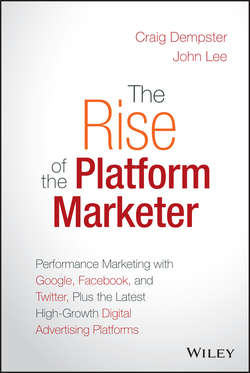Читать книгу The Rise of the Platform Marketer - Lee John - Страница 4
На сайте Литреса книга снята с продажи.
PREFACE
ОглавлениеFor decades, the concept of customer relationship marketing (CRM) has attracted executives who believe in customer centricity and the idea that customer strategy should be the basis of the business strategy. In his book, Connected CRM: Implementing a Data-Driven, Customer-Centric Business Strategy, David Williams defines Connected CRM (cCRM)® as the systematic practice in which marketers identify, acquire, and retain customers based upon their value. Through a framework that supports these orchestrated customer interactions, brands are able to improve financial results, create competitive advantage, and drive shareholder value.1
As marketers, we've always known that the key to competitive advantage is to be the brand that better understands the needs and behaviors of individual consumers. That intelligence allows the brand to create greater value through more personalized, relevant experiences. Over the years, advancements in data management, technology, and analytics have continuously enhanced our capacity to build vital customer intelligence.
More recently, the mass digitization of media and channels has allowed marketers to take that knowledge to another level, driving ever more personalized engagements with individual consumers, delivered across the complete range of media, channels, and devices. Today, the market refers to just about everything as media. As a marketer, you have countless avenues for addressing consumers, whether by reaching the audience through third-party sources, such as display or search (paid); building buzz through social communities, industry chatter, or even public relations (earned); or by making first-party connections via your own properties, such as website or mobile apps (owned).
Addressability at scale is the opportunity to create competitive advantage through the delivery of targeted, personalized experiences to consumers. Media and channels that are enabled by addressability at scale can be described as “addressable audience platforms.” An audience platform is a digital technology that enables those automated experiences to individuals (known and anonymous), at scale, utilizing first- and/or third-party data. Every interaction is an opportunity to collect and leverage data. But only now it has become possible to manage these disparate interactions at scale, as the digital audience platforms, such as Facebook, Google, and Twitter, continue to develop and grow. And our ability to build such wide-reaching connections across the addressable platforms has enabled us to foster relationships that span the customer life cycle and thus optimize the value of customers and segments.
To develop such relevant engagements with consumers through these platforms, brands are beginning to realize that they will have to cultivate an elevated set of capabilities, tools, metrics, and processes, along with a new set of skills to utilize them. This new breed of marketer – the Platform Marketer – has a deep understanding of traditional marketing and CRM principals, yet possesses the knowledge and innovative forethought to thrive in the ever-expanding digital audience platform environment. Due to the increased complexity involved in leveraging data, technology, and analytics in the digital era, platform marketing is not for the faint of heart or the complacent. Successful Platform Marketers will be steadfast innovators, dedicated to navigating undiscovered territory, wrought with twists, turns, and heavy lifting. But for those who can capitalize on addressability at scale, the spoils will include more profitable customer relationships and sustained competitive advantage.
1
David Williams, Connected CRM: Building a Data-Driven, Customer-Centric Business Strategy (Hoboken, NJ: John Wiley & Sons, March 2014).
